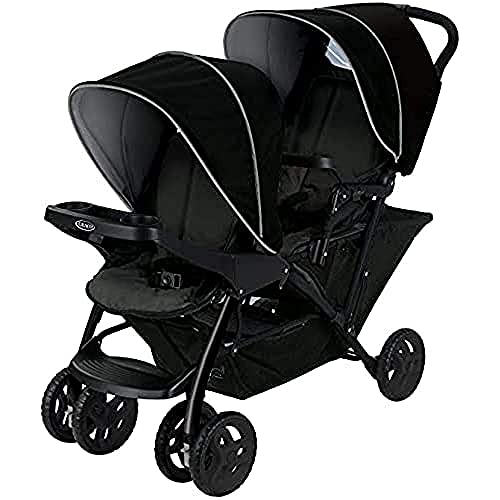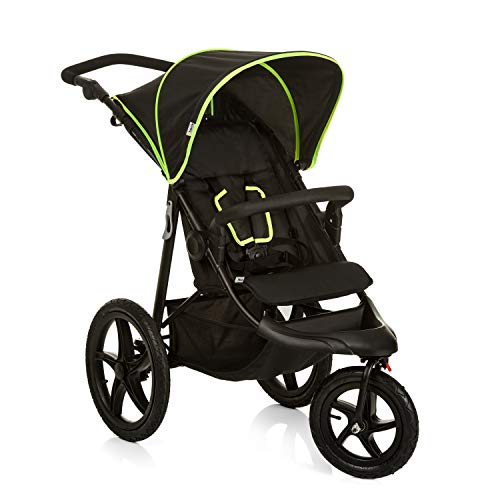5 Parent Facing Pram Tips From The Pros
Robt
0
3
00:58
 Monitor Your Little One's Wellbeing With a Parent Facing Pram
Monitor Your Little One's Wellbeing With a Parent Facing PramWhen your baby is cuddled in a parent-facing pram, you can monitor their comfort and wellbeing easily. This is especially helpful when you're on busy days out.
 University of Dundee study found that babies who were in buggies with faces had more fun and had twice as much chat time and had lower heart rates - all indicators of less stress.
University of Dundee study found that babies who were in buggies with faces had more fun and had twice as much chat time and had lower heart rates - all indicators of less stress.Peace of Mind
A parent facing pram is a great way to ensure your baby's safety is secure. They will be seated in a secure seat that is securely fastened with the five-point harness, making them safe from any accidents that might occur when out and about.
A quality double pram will also come with a large shopping basket to fit all your baby's essentials and ensure that you don't need to think about where to put all of the extra items. Having the right accessories is also important to help your baby stay at ease throughout their journeys including a footmuff (check whether they're compatible with a five-point harness) and a pram liner to protect against sun or rain.
It's important to test the pushchair prior to purchasing it for your child. Models that have swivel wheels for easy maneuverability and adjustable handlebars make it easier for everyone in the family to operate.
If you're worried that your baby might falling out of their stroller and slipping out of the seat, an safety harness is a must for all parents. It will prevent your child from getting out of the seat. It is ideal for keeping them safe in case of any emergency.
It's important to know that some baby experts recommend that babies should be around six months old before they can use prams pushchairs prams pushchairs with front facing windows however this is subject to the individual developmental milestones. However, some babies will be ready to enter the world earlier, especially when they're curious and eager to explore the world around them.
Parents may be worried that their child may develop a flat area in the back of their head while spending time in a pram with a parent facing position, but this is nothing to be concerned about. Auckland osteopath Julia Griffiths suggests that babies must spend a significant amount of time lying on their backs to build their skull muscles, and this can often be accomplished using a car in a position that is affixed to the parent, alongside supervised Tummy time.
Enhanced Bonding
It is important to think about the direction that your baby faces when out and about, regardless of whether you are using a pram or a pushchair. It may appear to be a minor thing but it can have a significant impact on your little one's development and interaction with you while out and out and about.
A new study has found that babies who are in buggies facing away are less likely to talk or laugh with their parents as compared to those who use a parent facing pushchair. The study observed 272 children and their mothers in 60 towns as well as an additional study of 20 mothers and their infants. The study found that babies who were in a pram that was facing their parents were twice more likely to smile than babies who were in a buggy that was facing away. The reason for this is that when your child is able to see you, they are more engaged and excited to share the experience with you, promoting bonding and conversation.
Face-to-face interaction between babies encourages attachment and development. It also lets you point things out to them like buses or flowers, as well as playgrounds that they may not be aware of otherwise.
It is important to keep in mind that your baby must be able to sit up on their own before you convert it into a pushchair facing forward. Babies older than this age might be unable to adjust to the new position, and may be more stressed when they are required to move from a seated to a standing position.
The best way to ensure your baby is prepared for the transition is to test them by a medical professional. They will be able to verify that your child's muscles and bones are strong enough to handle it, as well as ensure that they haven't developed any over-sensitive areas. This test is particularly important if your child been using the pushchair since birth or when you previously used a pram with rear-facing seats. A health professional can also advise you when it's safe to let your child use an infant pushchair that faces toward the front.
Better Eye Contact
One of the great advantages of having a parent facing pram is being able to make eye contact with your little one. This is especially crucial for newborns and infants who are still learning how to communicate with the world. It's also a chance to talk to them and play with them which helps them to learn the names of the objects they see and boosts their language development.
Studies have proven that when babies are positioned facing their parents, they are more likely to talk to them and laugh more than when they're looking away from them. This is because they are absorbing the sounds and visuals of their environment, which helps them understand the world around them. Eye contact can also make it easier for parents and children to communicate. This helps soothe the infant and allows him to relax.
It's also a good prams idea to take along a toy for travel for your child to play with when they're in their pushchair. These toys stimulate the mind and can make children smile. They can also help your child recognize your voice, which is crucial to their development as a cognitive child.
Babies love looking at the world around their world and exploring it. As they get older and become more active, they may be able to sit in their pushchair. If this is the case it's worth looking into a front-facing stroller or pram from our range.
A few months after making the change to a front-facing pushchair, it's recommended that you add an infant foot warmer to keep your child warm and comfortable. Find a model that can be slid on and removed as needed and is compatible with your baby's car seat or cot. You can also buy an exclusive travel toy that helps your baby recognize their pram when they are out and out and about.
An excellent way to make sure that your baby's pushing posture is correct and that they're comfortable is to be sure to check their head and neck alignment on a regular basis. If the front of the pushchair tilts upwards the neck and head are being pushed against it. This is not safe.
Easier Monitoring
You can observe your baby's development better by having the reassuring view of their face when they are in a pram facing you. You can easily see whether they are crying, asleep or cold, or if they wear a hat on their head or their socks has fallen off. The presence of an infant on your lap makes it easier to talk to them as they are able to look at you and hear your voice.
This is particularly important for babies and toddlers with speech and language delays because it stimulates their brains. It is also a great way to teach them about the world around them, for instance when you show them busses or flowers. It's also an excellent occasion to sing to them as well especially if they are fond of singing!
Many babies enjoy talking to their parents when they are facing, and there are a lot of studies that demonstrate this. This study by Dundee University, for example discovered that babies spoke twice more in a pushchair that was facing forward than one facing backward. The same study found that babies whose faces were not visible by their parents showed more swings in their heart rate, suggesting that they were stressed and anxious. Heart rates were less agitated and more consistent for babies whose faces they could see.
This does not mean that every child should be switched to a forward-facing pram immediately. It is recommended to wait until your child is six months old. This is the time when their muscles and bones are mature enough to make the transition secure for them.
Many parents place their children in a stroller with their parent until the time comes. There are numerous excellent strollers and pushing chairs that let you switch between two positions so that you can keep your child in a parent-facing position as long as you like. Verify the compatibility between your buggy or pram and the car seat that you plan to use. It varies from model to model.
